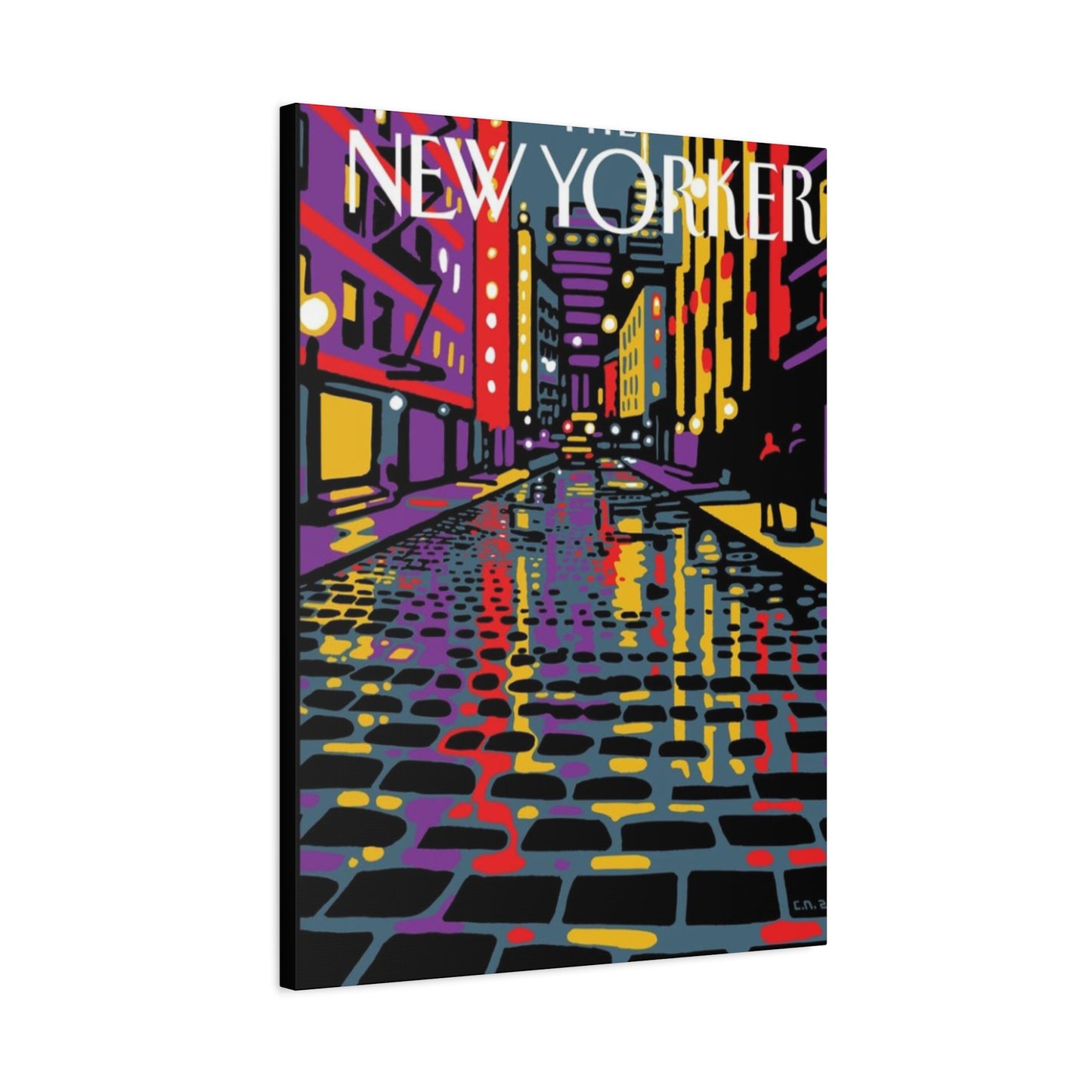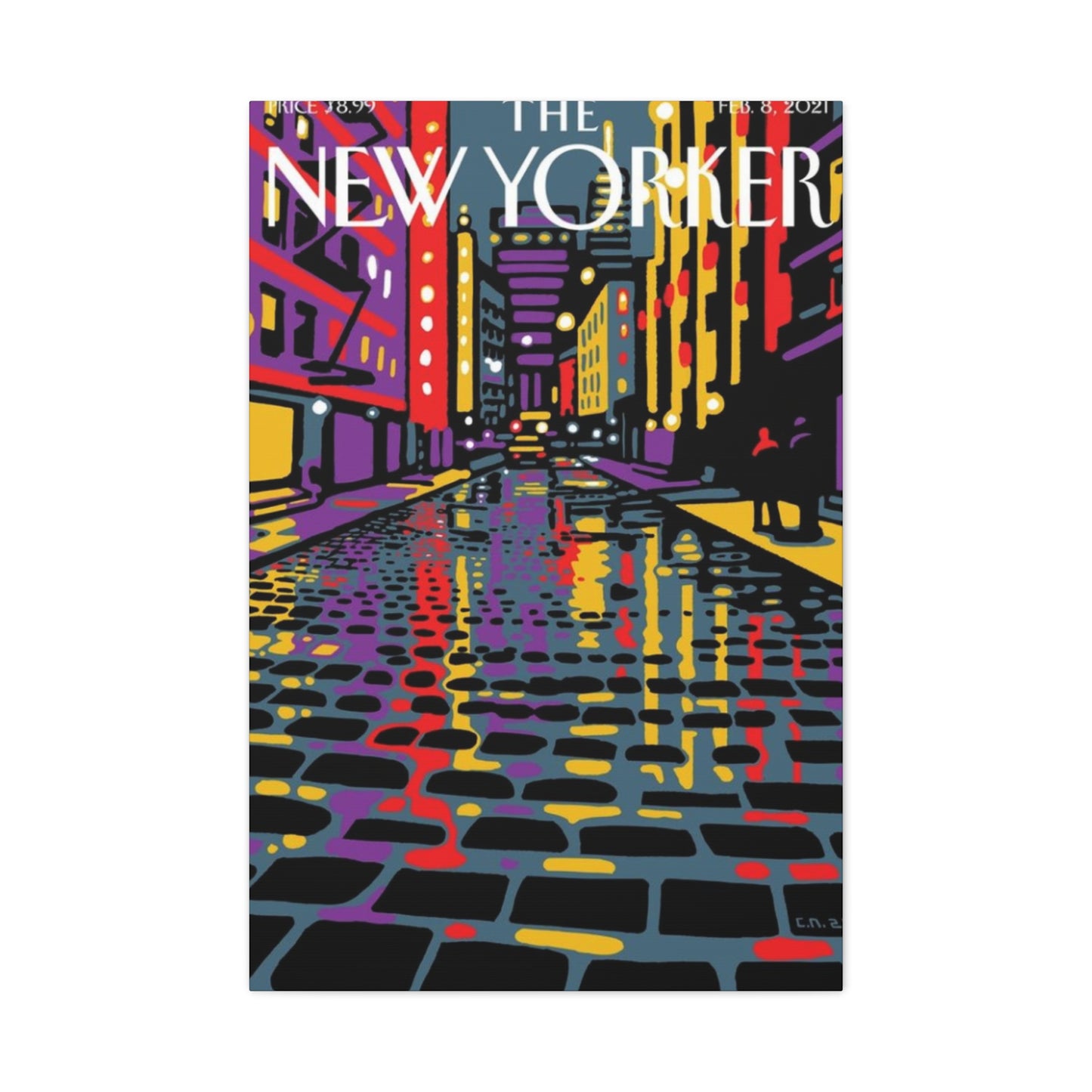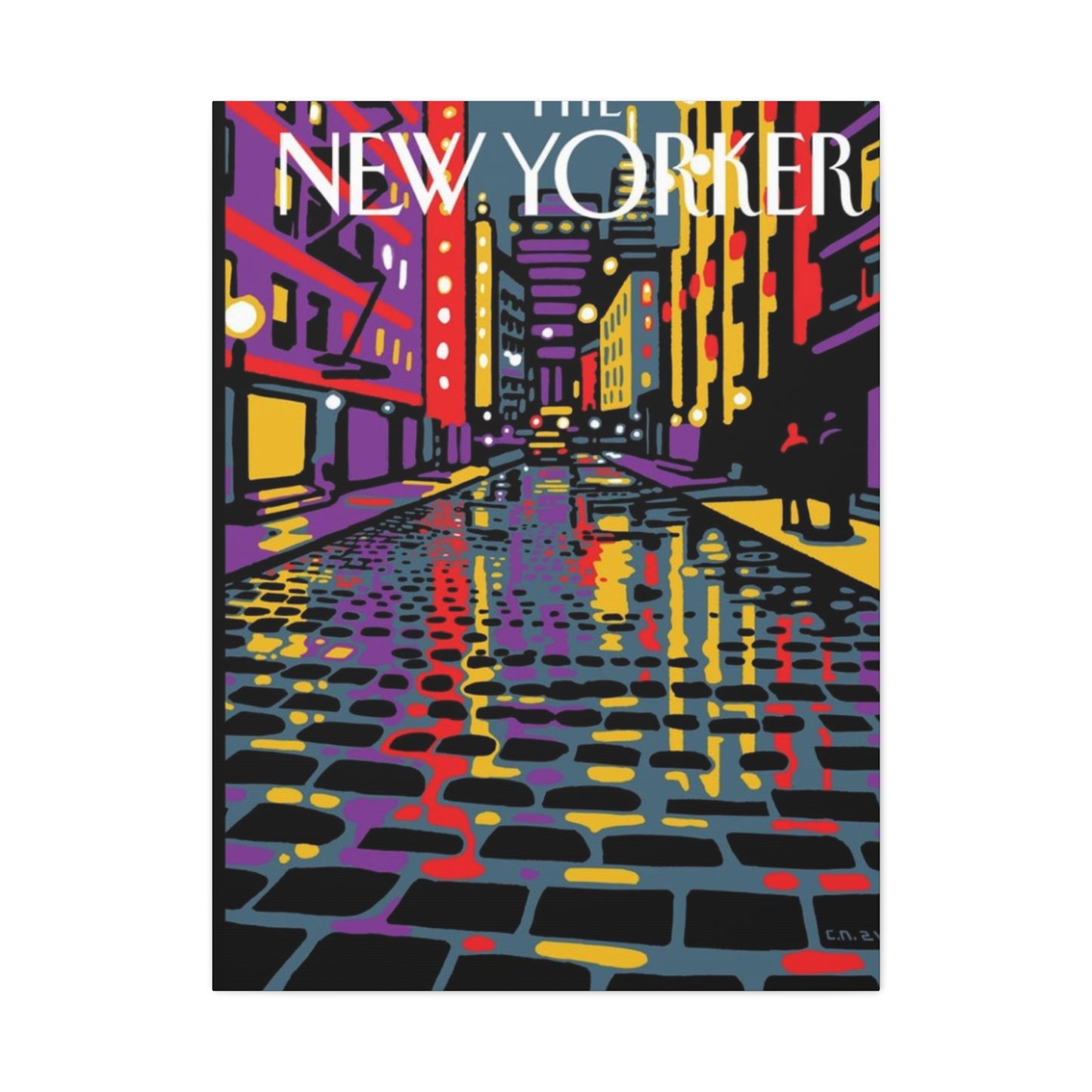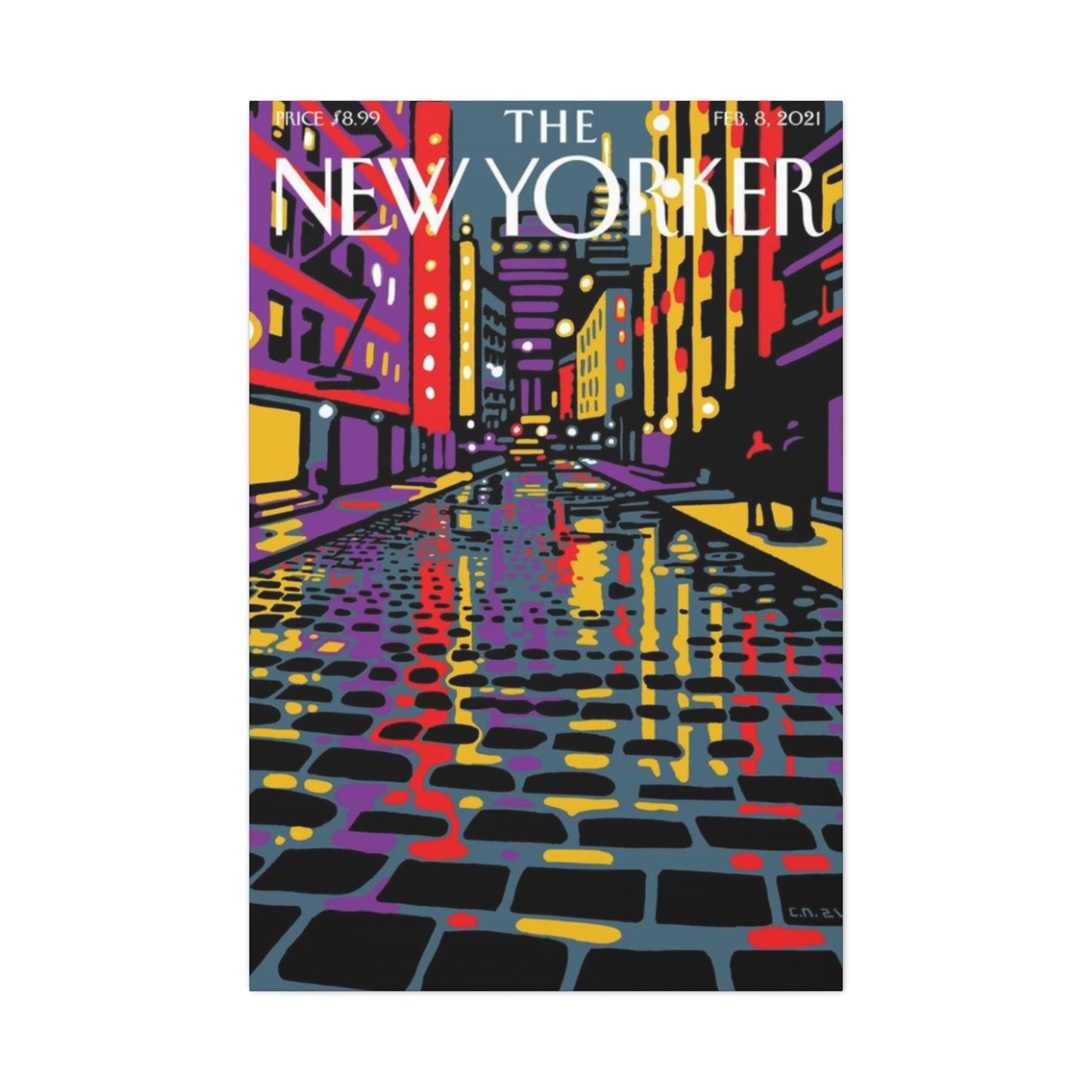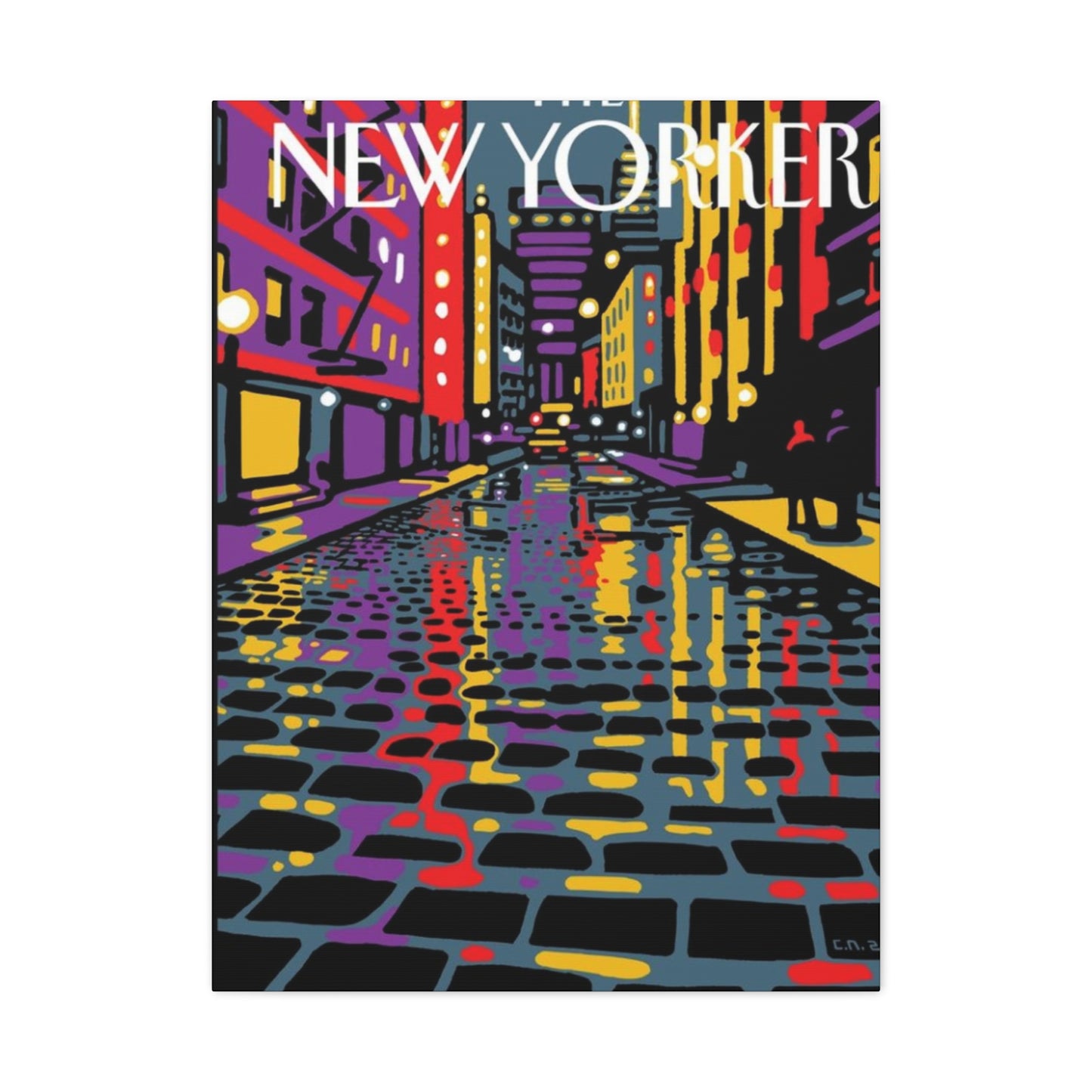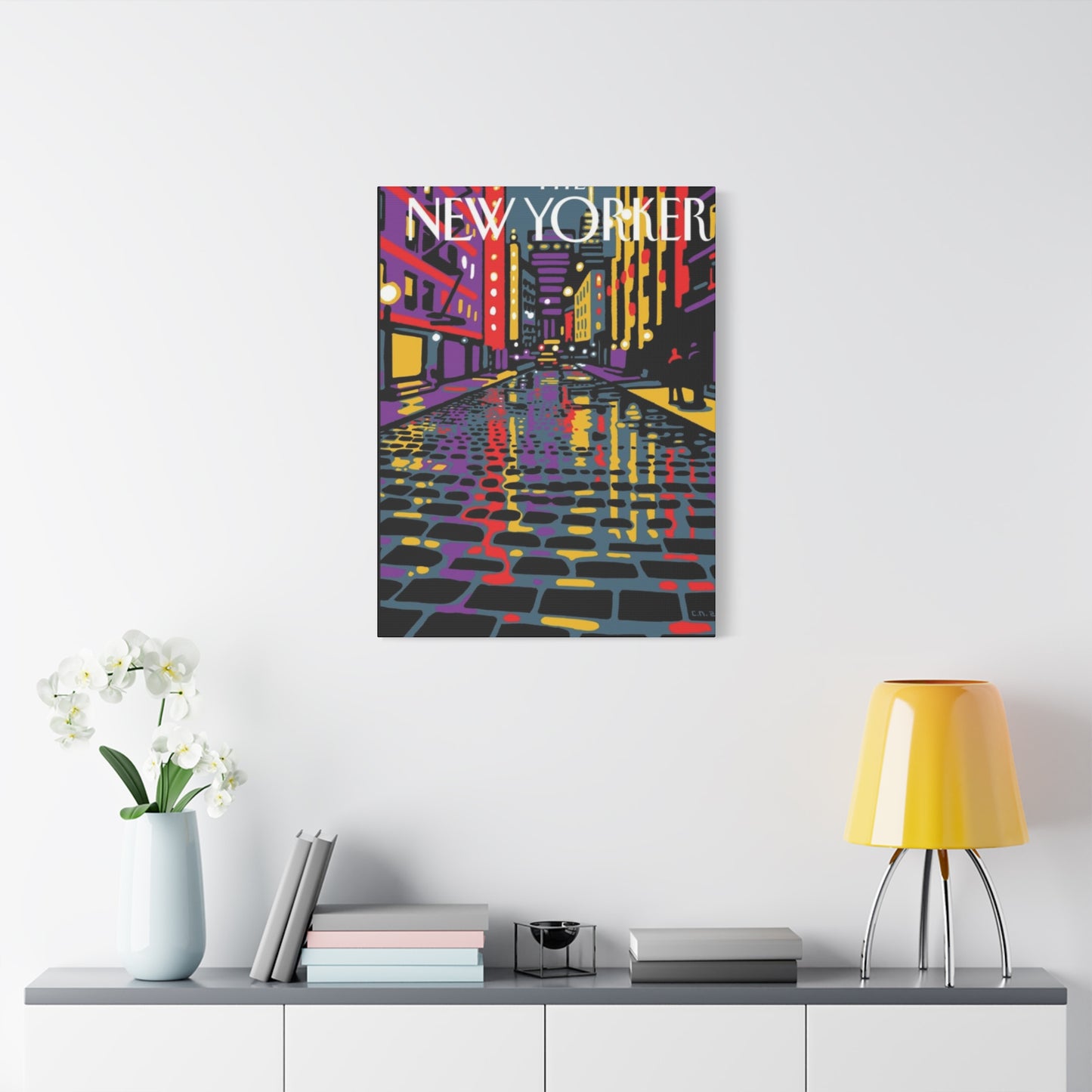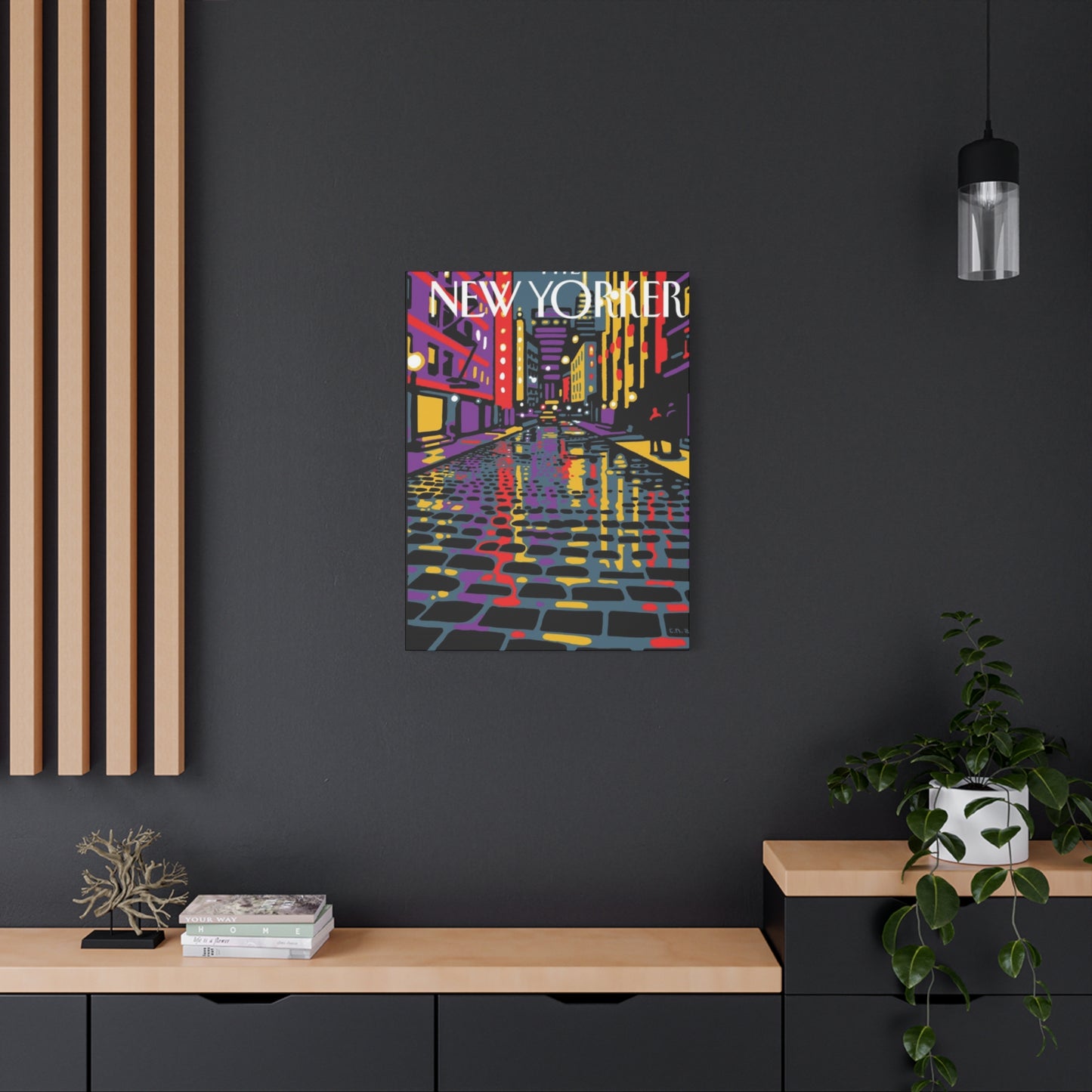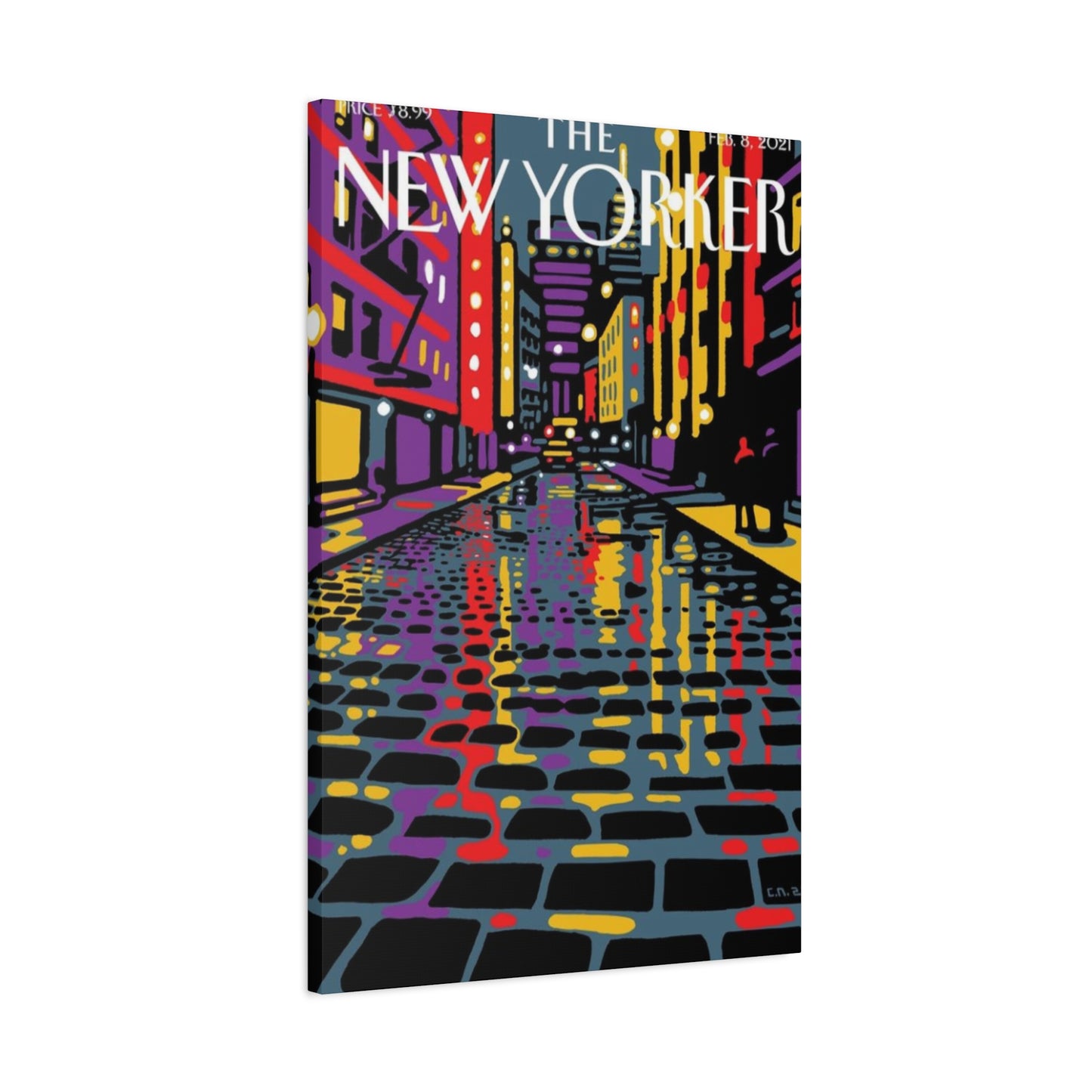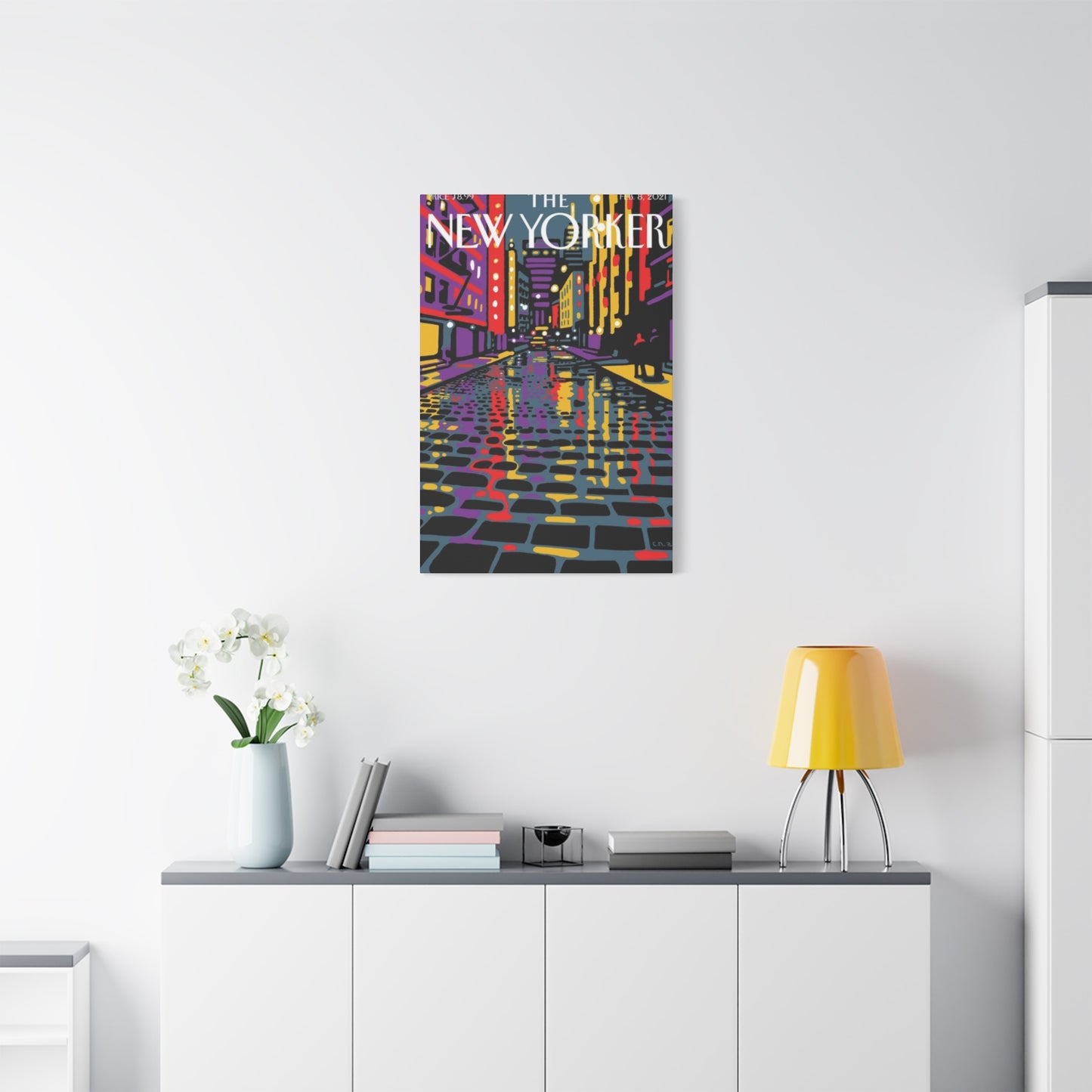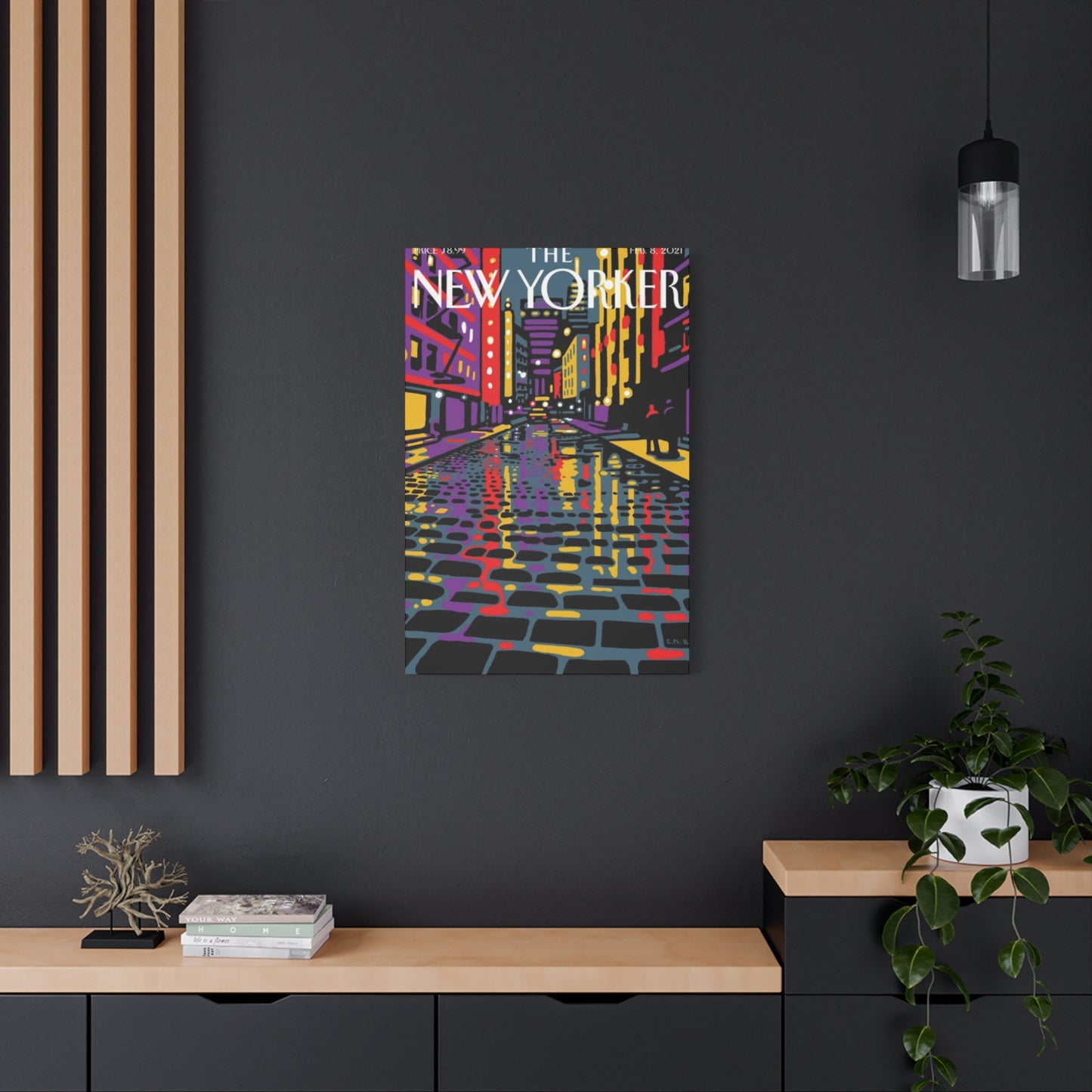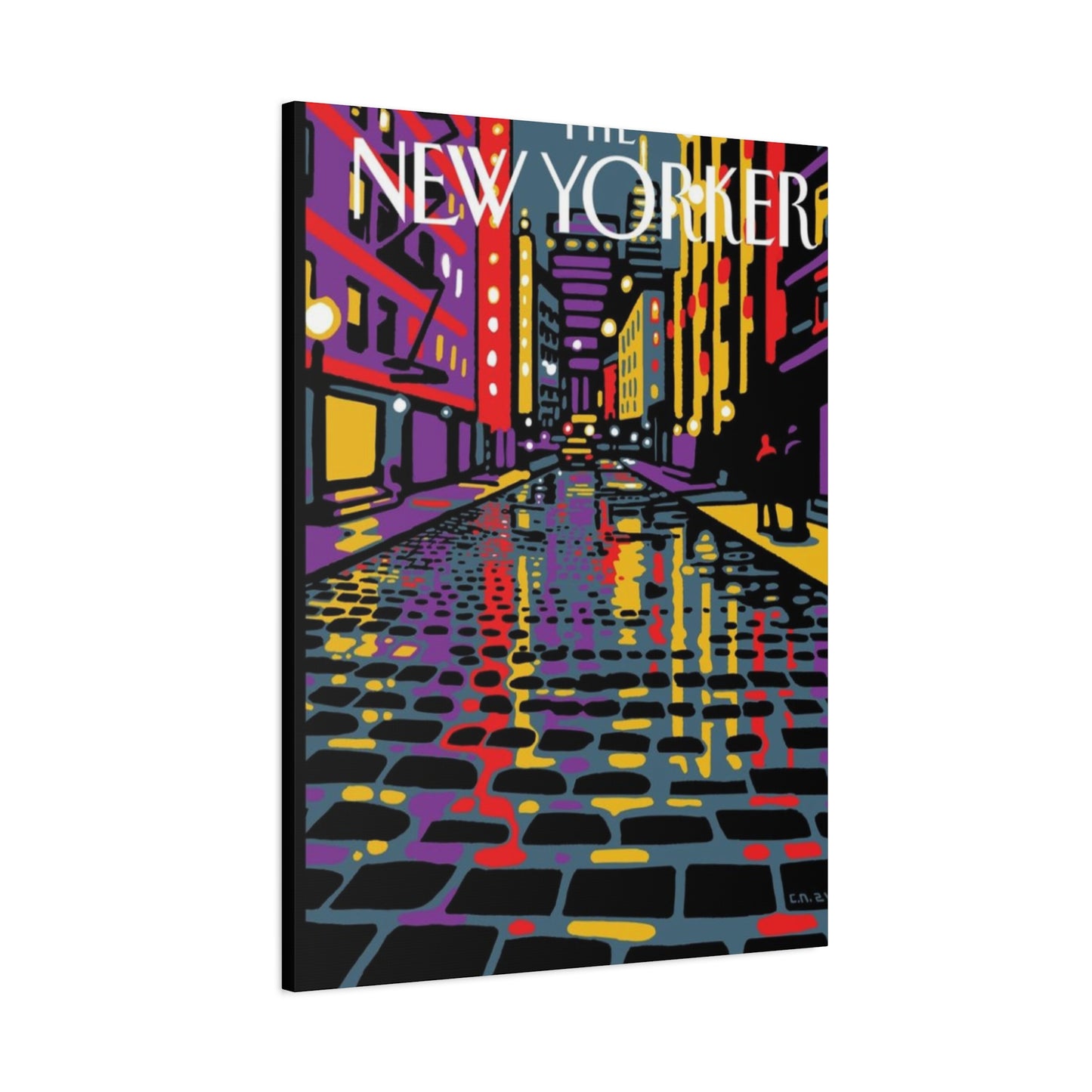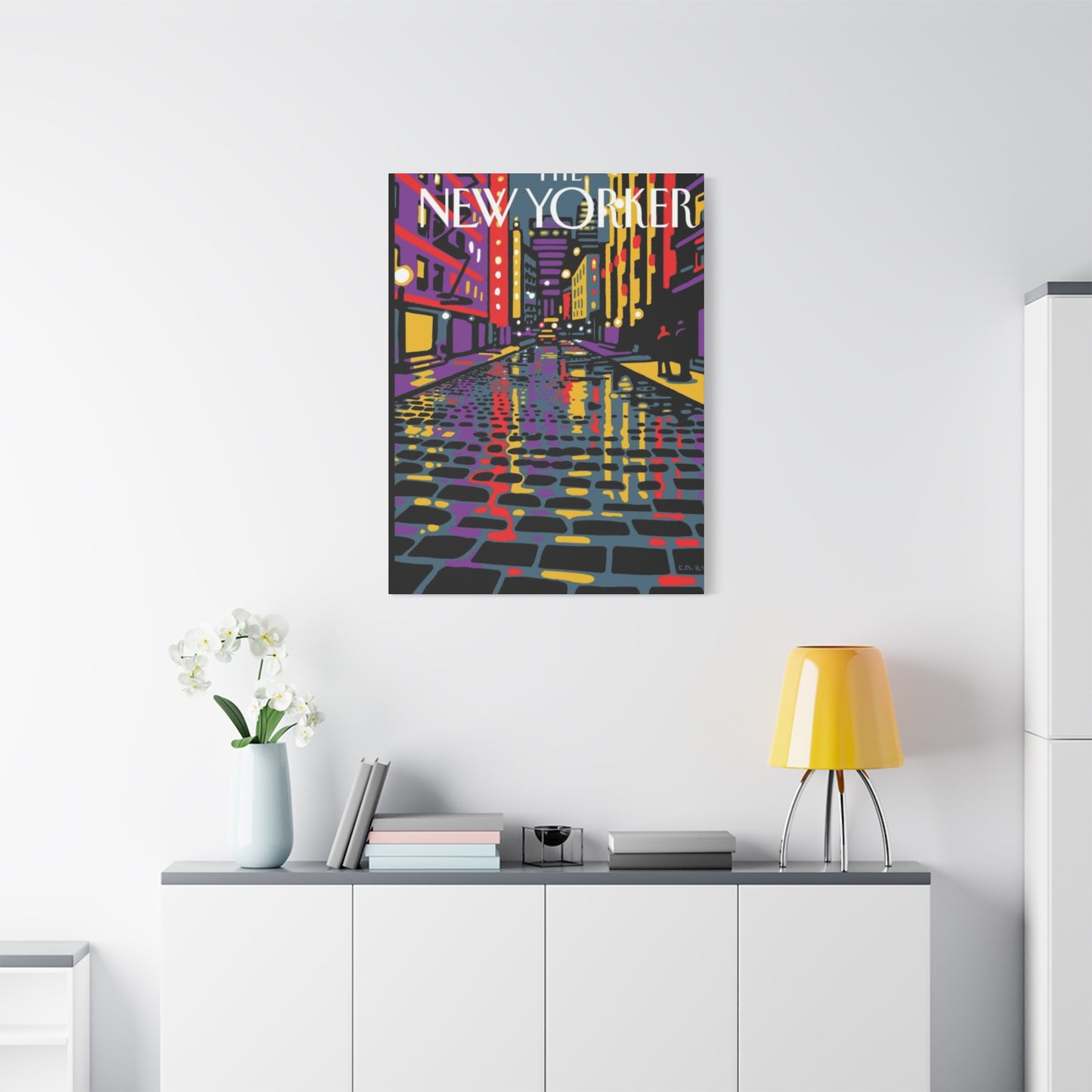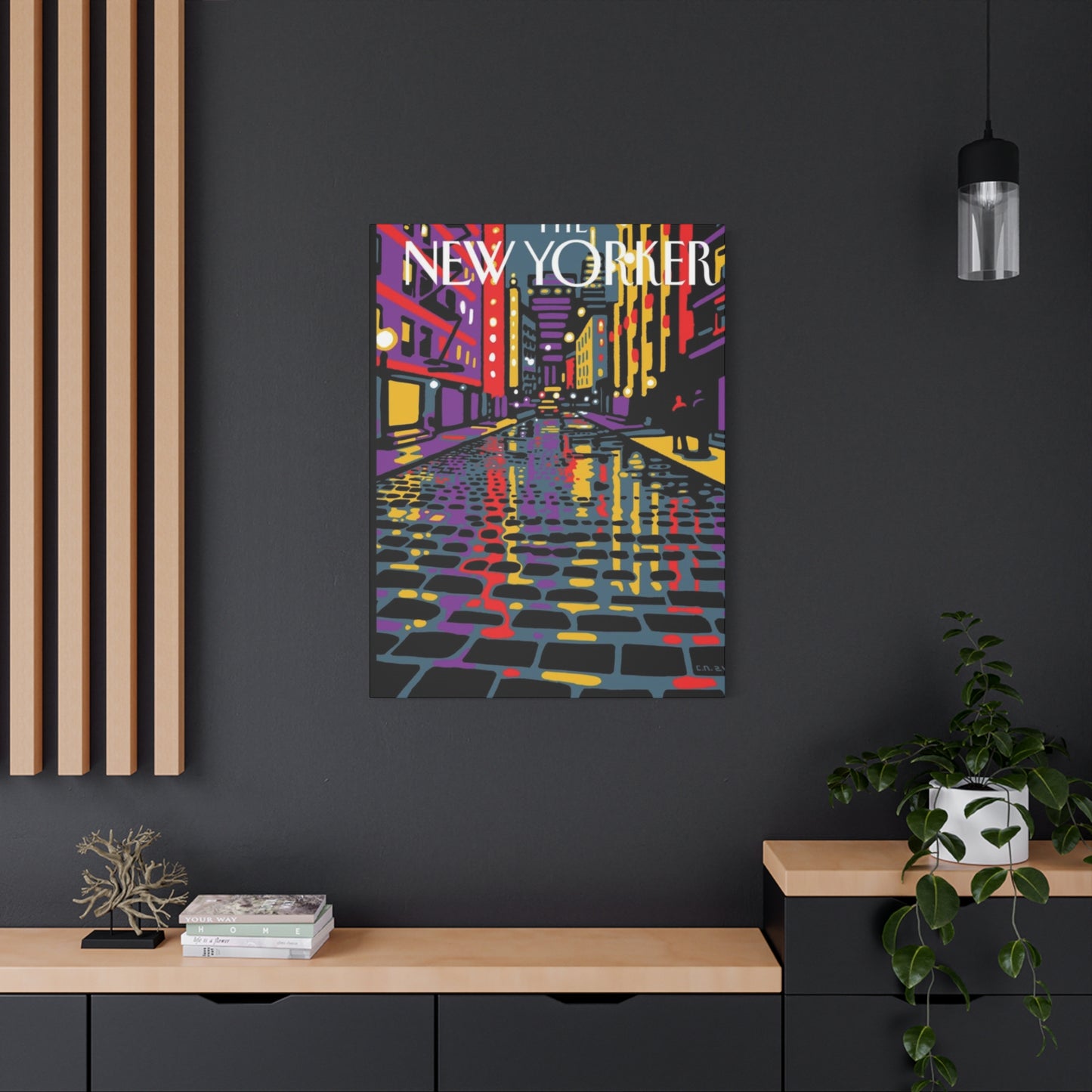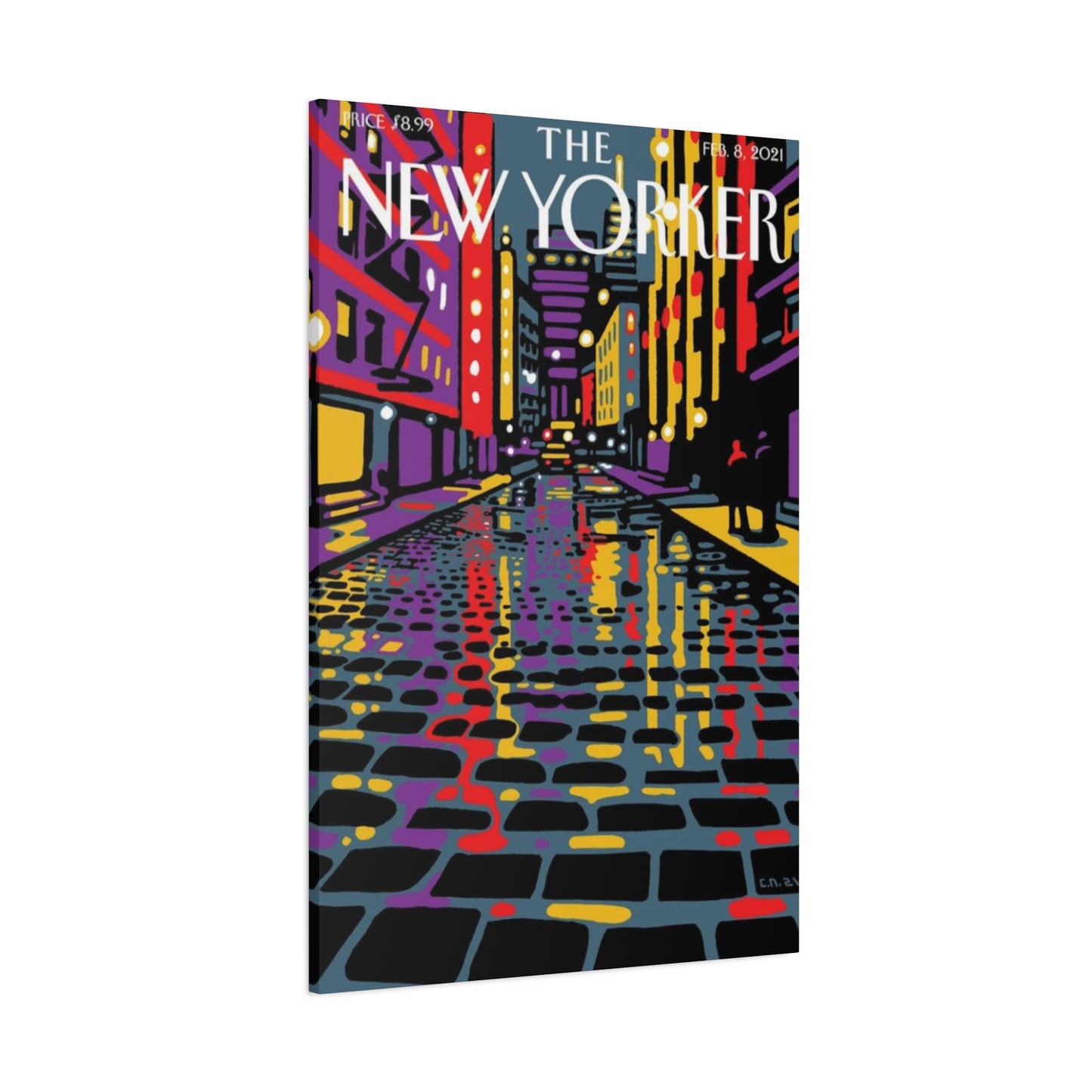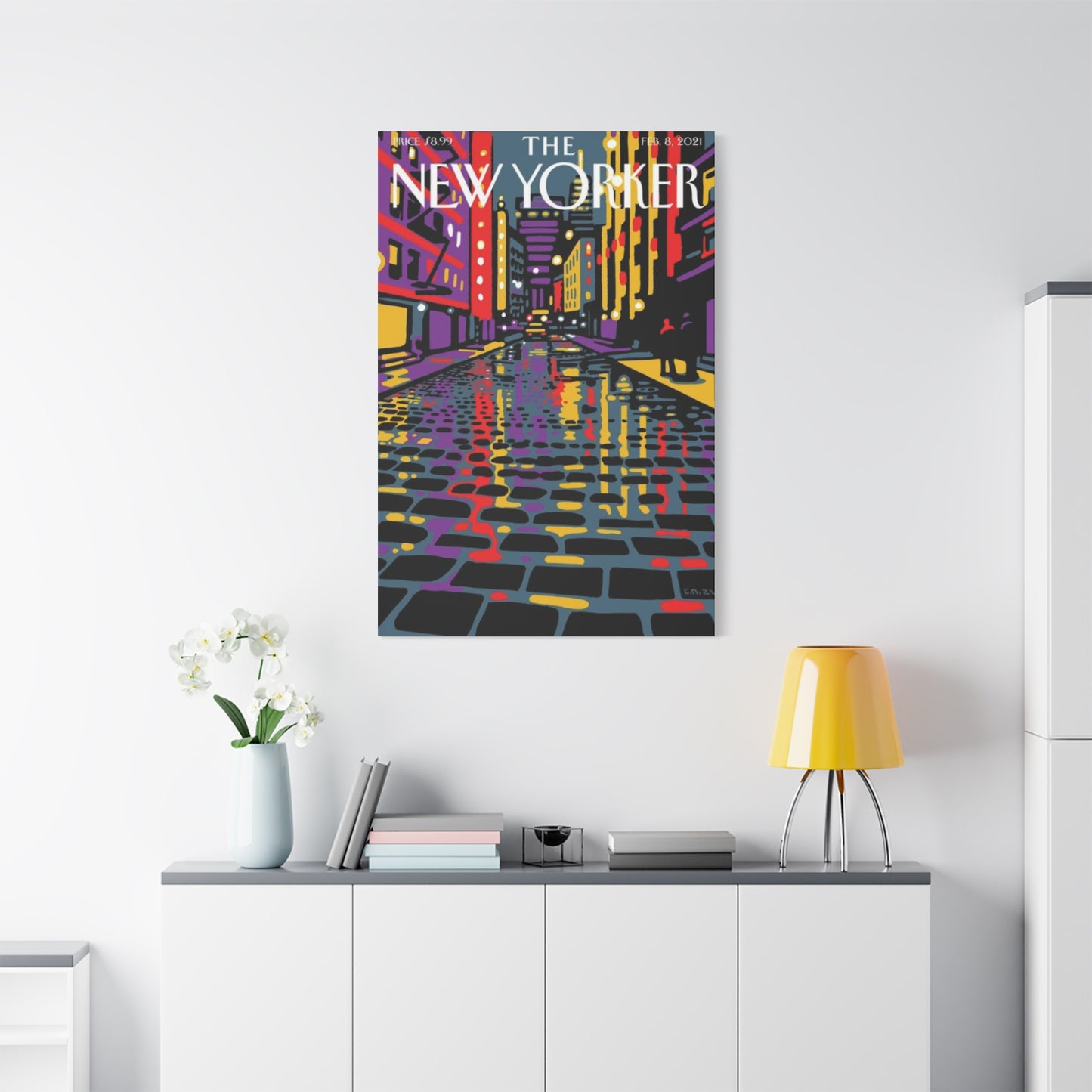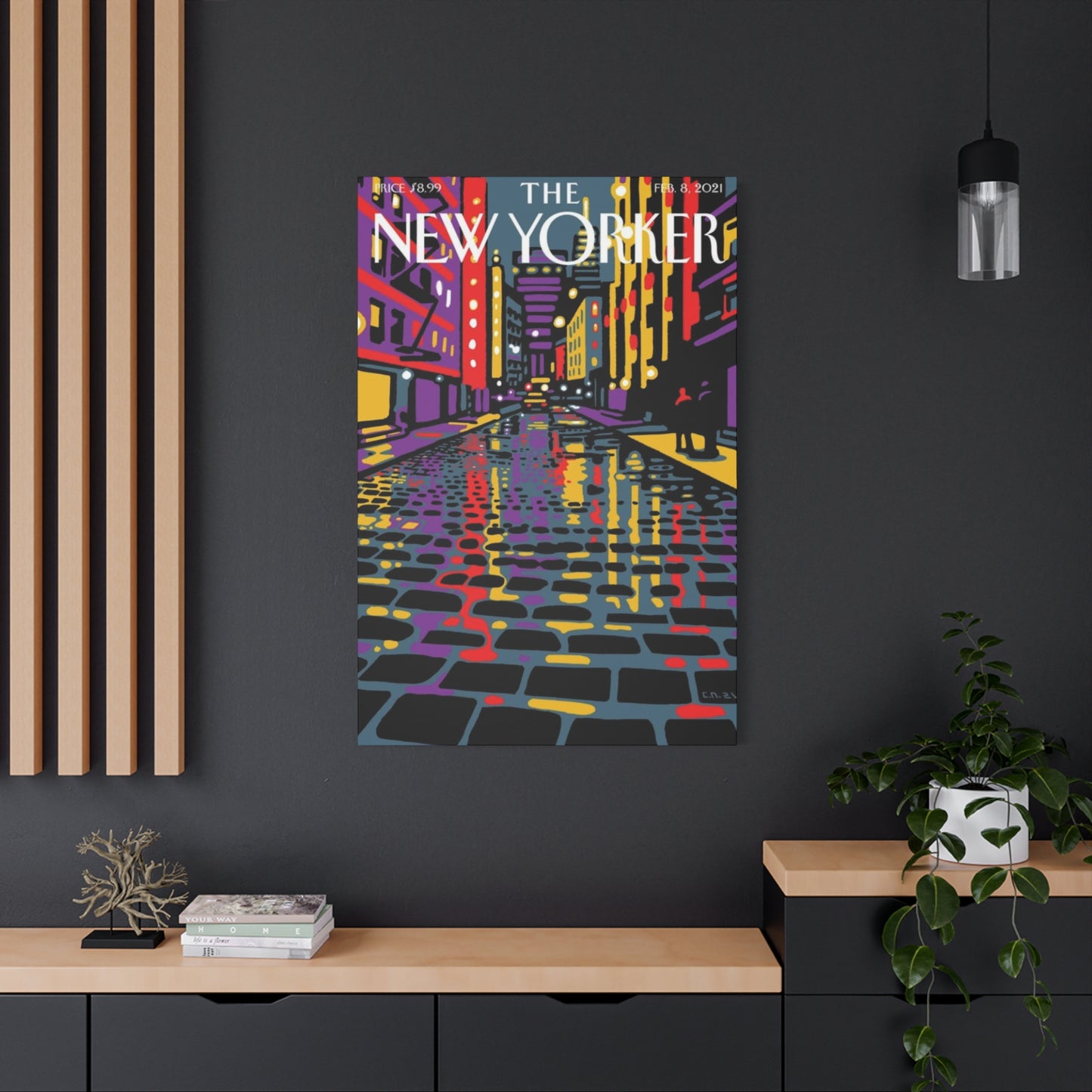The Enduring Allure of New York City Wall Art for Your Interior Space
New York City. The very name evokes a universe of images, a symphony of sounds, and a palpable energy that has captivated the world for centuries. It's a city of dreams, a vertical landscape of ambition, and a cultural crucible where history and modernity collide on every street corner. For those who have walked its avenues, and even for those who have only dreamed of it, the connection is profound. This deep, personal connection is the driving force behind the immense popularity of New York City wall art. It's more than just decoration; it's a window into an iconic world, a piece of the city's soul brought into the personal sanctuary of a home or the professional atmosphere of an office.
This art form allows individuals to curate their own slice of the metropolis, whether it’s the tranquil dawn over the East River, the electric neon glow of Times Square at midnight, or the quiet, snow-dusted paths of Central Park. The appeal lies in its incredible diversity, offering a visual narrative that can be tailored to any taste, any mood, and any interior design philosophy. From the stark, dramatic lines of black and white architectural photography to the vibrant, chaotic splashes of abstract paintings inspired by the city's relentless pace, NYC wall decor serves as a constant source of inspiration, nostalgia, and sophisticated urban charm. It speaks a universal language of resilience, creativity, and the endless possibilities that define the spirit of New York.
The Emotional Resonance of Metropolitan Artwork
Why does imagery of a specific city hold such power over our emotions and design choices? In the case of New York, the answer is layered. New York City wall art is not merely a depiction of buildings and streets; it is a vessel for memory, aspiration, and identity. For someone who once lived in the city, a print of the West Village's brownstones can trigger a flood of personal memories—the corner cafe, the autumn walks, the rhythm of a life once lived. For the ambitious professional, a panoramic view of the Manhattan skyline can serve as a daily motivator, a visual representation of the heights they aim to reach in their own career. It embodies the "if you can make it here, you can make it anywhere" ethos. For the world traveler, it’s a memento of a journey, a tangible piece of a global adventure.
Furthermore, New York City is a cultural touchstone, immortalized in countless films, television shows, songs, and novels. This shared cultural consciousness means that a piece of art depicting the Brooklyn Bridge or a yellow taxi cab is instantly recognizable and laden with meaning. It connects us not only to the physical place but to a vast web of stories and characters that have become part of our collective imagination. This emotional weight transforms a simple piece of decor into a meaningful artifact, an object that tells a story and enriches the environment far beyond its aesthetic qualities. It fosters a sense of connection, making a space feel more personal, more curated, and infused with the dynamic spirit of the city itself.
Versatility in Design: NYC Art for Every Style
One of the most compelling attributes of New York City wall art is its extraordinary adaptability. It seamlessly integrates into a vast spectrum of interior design aesthetics, from the most austere minimalism to the most eclectic maximalism. For a minimalist or Scandinavian-inspired space, a simple, large-scale black and white photograph of the Flatiron Building's sharp angles or a delicate line art drawing of the skyline can add a touch of urban sophistication without overwhelming the serene atmosphere. The focus on form and structure in such pieces complements the clean lines and neutral palettes characteristic of these styles. In contrast, an industrial loft with exposed brick walls and metal accents is the perfect backdrop for a gritty, large-scale canvas of a graffiti-covered wall in Bushwick or a dramatic, moody shot of the DUMBO waterfront at night.
This type of art enhances the raw, urban feel of the space. For a mid-century modern interior, vintage travel posters of New York from the 1950s or 60s, with their distinct typography and color palettes, can add a nostalgic and historically relevant touch. In a contemporary or modern home, an abstract painting that captures the city's energy through bold colors and dynamic brushstrokes can serve as a stunning focal point, injecting life and movement into the room. Even in more traditional or classic interiors, a tastefully framed, sepia-toned photograph of Grand Central Terminal or a classic oil painting of Central Park in autumn can add a timeless elegance and a sense of worldly culture. This chameleon-like ability to complement any decor makes NYC wall decor a perennially popular choice for designers and homeowners alike.
The Statue of Liberty: A Beacon of Hope in Art
The Statue of Liberty is arguably one of the most recognized symbols on the planet, representing freedom, democracy, and hope. In the realm of New York City wall art, Lady Liberty is a subject of endless fascination and diverse interpretation. Art pieces featuring this colossal neoclassical sculpture are imbued with layers of meaning, making them powerful additions to any space. Photographic prints often capture the statue from dramatic angles, perhaps silhouetted against a fiery sunset, with the golden light catching the folds of her copper robes. Aerial shots place her in the context of the vast New York Harbor, emphasizing her role as a welcoming figure for generations of immigrants. Close-up shots might focus on the stoic, determined expression on her face or the intricate details of her crown and torch.
These photographic representations can evoke feelings of patriotism, inspiration, and awe. Painters, on the other hand, offer more subjective interpretations. An impressionistic painting might depict the statue with soft, blurred brushstrokes, surrounded by the shimmering, reflective waters of the harbor, creating a dreamy and romantic mood. A pop art rendition could use bold, vibrant colors and graphic outlines, transforming the iconic figure into a modern, edgy statement piece. Abstract artists might deconstruct her form, using the green patina of the copper and the torch's flame as a starting point for a non-representational exploration of color and shape, symbolizing the abstract concepts of liberty and enlightenment. Regardless of the medium, wall art featuring the Statue of Liberty is a timeless choice, bringing a sense of history, purpose, and profound symbolism into an interior.
The Empire State Building: Art Deco Majesty on Canvas
The Empire State Building has been a defining feature of the Manhattan skyline since its completion in 1931. Its distinctive Art Deco design, with its elegant setbacks and soaring spire, makes it a beloved subject for artists. Wall art centered on this architectural marvel often celebrates its grandeur, history, and enduring presence. Black and white photography is a particularly effective medium for capturing the Empire State Building's essence. The monochromatic palette emphasizes its strong geometric lines, the interplay of light and shadow on its limestone facade, and its majestic silhouette against the sky. These images often evoke a sense of timelessness and nostalgia, harking back to the golden age of New York.
Color photographs, especially those taken at sunrise or sunset, can paint the building in breathtaking hues of orange, pink, and purple, highlighting its role as a silent observer of the city's daily rhythm. Night shots, with the building's famous lights illuminating the darkness, create a sense of drama and urban energy. Artistic renderings go a step further. Illustrations might simplify the building's form into a sleek, graphic representation, perfect for a modern or minimalist decor. Watercolor paintings can give the iconic skyscraper a softer, more ethereal quality, as if it were a vision in a dream. Choosing a piece of New York City wall art featuring the Empire State Building is a way to pay homage to a masterpiece of human ingenuity and an emblem of New York's relentless ambition and vertical reach. It is a statement of elegance and a connection to the city's rich architectural heritage.
The Brooklyn Bridge: An Engineering Marvel as an Artistic Muse
The Brooklyn Bridge is more than just a transportation artery; it is a work of art in its own right and a perennial muse for creators. Its Gothic revival towers, intricate web of steel cables, and sweeping promenade have been captured in countless artistic works, each offering a unique perspective on this 19th-century engineering feat. Wall art depicting the Brooklyn Bridge is incredibly popular due to its aesthetic beauty and symbolic weight, representing connection, endurance, and human achievement. Classic photographic shots often frame the Manhattan skyline through the bridge's iconic arches, creating a powerful composition that juxtaposes the old and the new. Long-exposure photographs taken at night transform the streams of traffic into vibrant rivers of red and white light, while the bridge and the city beyond remain in sharp, glittering focus.
This technique adds a dynamic and almost surreal quality to the scene. Sepia-toned or black and white prints of the bridge emphasize its texture and form—the rough-hewn granite of the towers, the delicate yet strong pattern of the suspension cables—and evoke a deep sense of history and nostalgia. Painters are drawn to the bridge for its complex geometry and the way it interacts with light. An oil painting might capture the warm, golden light of dawn illuminating the bridge's structure, reflecting off the East River below. A watercolor could depict a foggy morning, with the bridge's towers mysteriously emerging from the mist. The perspective is also key; some artworks show the bridge from afar, a graceful line connecting two boroughs, while others place the viewer right on the pedestrian walkway, creating an immersive experience of crossing it. This variety makes Brooklyn Bridge art a versatile choice for any lover of New York City wall art.
Times Square: Capturing Vibrant Urban Energy
If one place encapsulates the frenetic, dazzling energy of New York City, it is Times Square. Known as "The Crossroads of the World," it is a sensory explosion of neon billboards, bustling crowds, and ceaseless motion. Translating this vibrant chaos into a two-dimensional piece of wall art is a challenge that artists embrace with gusto, resulting in some of the most dynamic and visually arresting pieces of NYC decor. Photography is a natural fit for capturing the essence of Times Square. Long-exposure shots are particularly popular, as they blur the movement of people and traffic into abstract streaks of light and color, while keeping the iconic digital displays sharp and vivid. This creates a powerful visual metaphor for the area's constant flow of energy.
High-contrast black and white photos of Times Square offer a different perspective, stripping away the color to focus on the raw geometry of the buildings, the density of the crowds, and the dramatic interplay of light and shadow from the countless screens. It can give the scene a gritty, film-noir quality. Painters often use an expressive, almost frantic style to convey the feeling of being in Times Square. Abstract expressionism, with its bold, gestural brushstrokes and intense color palette, can effectively communicate the sensory overload and exhilarating atmosphere. Digital artists and illustrators might create stylized, graphic interpretations, exaggerating the brightness of the lights and simplifying the surrounding architecture to create a hyper-realistic or futuristic vision of the iconic location. A piece of New York City wall art featuring Times Square is a bold statement, perfect for a space that aims to feel modern, energetic, and connected to the pulse of contemporary urban life.
Central Park: A Natural Oasis Amidst Concrete
In a city defined by its towering skyscrapers and dense urban grid, Central Park stands as a remarkable and beloved contrast—a sprawling rectangle of green that serves as the city's lungs and its playground. Wall art inspired by Central Park captures a different side of New York, one that is serene, romantic, and connected to the changing seasons. These pieces can bring a sense of tranquility and natural beauty into an interior space, providing a welcome escape from the hustle and bustle of daily life. Artworks often depict the park's most iconic locations. A painting of the Bow Bridge, with its elegant cast-iron arches, reflected in the calm waters of the Lake, is a classic image of romance and peace. A photograph of Bethesda Terrace and its magnificent fountain can capture the grandeur of its design and its role as a central gathering place.
Images of Sheep Meadow on a sunny day, dotted with people relaxing and picnicking, evoke a sense of community and leisure. The seasonal transformations of the park provide a rich source of inspiration. Autumn in Central Park is a spectacular display of color, and artworks from this season are filled with fiery reds, oranges, and yellows, creating a warm and inviting atmosphere. Winter scenes, with snow blanketing the trees and pathways, offer a quiet, monochromatic beauty, transforming the familiar landscape into a magical wonderland. Spring brings blossoms and fresh green leaves, while summer is depicted with lush, deep greens and dappled sunlight. Whether it’s a panoramic shot of the park with the Midtown skyline rising in the background or an intimate close-up of a flower in the Conservatory Garden, Central Park wall art offers a peaceful and rejuvenating glimpse into the heart of Manhattan.
The Chrysler Building: A Gleaming Art Deco Beacon
While the Empire State Building may be more famous, for many architecture aficionados and art lovers, the Chrysler Building is the true jewel of the New York City skyline. Its shimmering, terraced crown, adorned with triangular windows and eagle-headed gargoyles, is a masterpiece of Art Deco design. Wall art that features the Chrysler Building is a celebration of elegance, innovation, and a uniquely glamorous period in the city's history. The building's stainless steel cladding makes it a fascinating subject for photographers, as its surface reflects the changing light of the day and the colors of the sky. A photograph taken during the "blue hour"—the period just after sunset—can capture the building's spire illuminated against a deep indigo sky, creating a breathtaking and sophisticated image.
Black and white photography excels at highlighting the building's intricate geometric patterns and the dramatic contrast between its metallic sheen and the shadows it casts. These images often have a timeless, almost cinematic quality. Artists who paint or illustrate the Chrysler Building are often drawn to its decorative details. A detailed rendering might focus on the graceful curves of the spire or the stylized eagles that mimic the radiator caps of Chrysler automobiles from that era. Abstract interpretations might use the building's distinctive shapes as a jumping-off point for a composition of metallic colors, sharp angles, and vertical lines, capturing its essence rather than its literal form. A piece of New York City wall art depicting the Chrysler Building is an emblem of sophistication. It is perfect for an office or living space that aims for a refined, classic, and artistically informed aesthetic, paying tribute to one of the most beautiful skyscrapers ever built.
Grand Central Terminal: The Romance of Travel and History
Grand Central Terminal is more than just a train station; it is a historic landmark and a living, breathing monument to the golden age of rail travel. Its majestic Main Concourse, with its celestial ceiling mural, grand staircases, and iconic four-faced clock, provides a wealth of inspiration for artists. Wall art depicting Grand Central Terminal captures a unique blend of architectural grandeur, human activity, and romantic nostalgia, making it a captivating addition to any interior. A classic and powerful image is the view from the balconies overlooking the Main Concourse. Photographers often use this vantage point to capture the vastness of the space and the constant flow of people below, sometimes using a slow shutter speed to blur the commuters into streams of movement, contrasting with the stationary, timeless architecture. Another iconic shot focuses on the rays of sunlight that stream through the massive arched windows in the late afternoon, illuminating the cavernous space and creating an almost cathedral-like atmosphere.
The details of the terminal are also a rich subject. A close-up of the famous opal-faced clock above the information booth, a well-known meeting spot, can evoke a sense of anticipation and connection. A piece focusing on the astronomical ceiling, with its zodiac constellations painted in gold leaf against a cerulean blue sky, brings a sense of wonder and cosmic scale into a room. Whether presented in a nostalgic sepia tone, a crisp black and white, or full, vibrant color, wall art of Grand Central Terminal tells a story of journeys, meetings, partings, and the enduring grandeur of New York City's past.
The Flatiron Building: A Uniquely Shaped Architectural Icon
The Flatiron Building, with its distinctive triangular shape, is one of New York's most photographed and artistically rendered landmarks. Its unusual design, a clever response to its wedge-shaped plot of land at the intersection of Fifth Avenue and Broadway, has made it an architectural icon and a favorite subject for those creating New York City wall art. Its Beaux-Arts facade, with its intricate limestone and terra-cotta detailing, provides a beautiful texture that artists love to capture. Wall art of the Flatiron Building often emphasizes its dramatic, knife-like prow as it appears to sail up the avenue. Head-on shots from the south create a startlingly thin and monumental image, highlighting its unique footprint. Photographs taken in different weather conditions can dramatically alter the building's mood.
On a rainy day, its reflection in wet streets can create a moody, impressionistic scene. On a snowy day, it can look like a frosted, fairytale castle. Black and white photography is particularly well-suited to the Flatiron, as it accentuates the building's form, texture, and the play of light and shadow across its undulating surfaces, giving it a classic, historic feel. Painters might choose to place the building in a historical context, perhaps with vintage cars and pedestrians in early 20th-century attire, celebrating its long-standing presence in the city. Modern and graphic interpretations might simplify its shape into a bold, geometric icon, perfect for contemporary decor. A piece of art featuring the Flatiron Building is a celebration of innovative design and a nod to the city's ability to create beauty in unconventional forms. It's a choice for those who appreciate architectural history and unique perspectives.
One World Trade Center: Resilience and Modernism in Art
Standing as a testament to hope, resilience, and rebirth, One World Trade Center is the most significant addition to the New York skyline in the 21st century. Its sleek, tapering form and reflective glass facade make it a powerful symbol of the city's strength and forward-looking spirit. As a subject for New York City wall art, it represents not only architectural innovation but also a profound emotional narrative. Art featuring One World Trade Center often portrays it as a beacon of light and a focal point of the Lower Manhattan skyline. Photographs taken at dusk, as the sun sets behind the building and reflects off its glass skin in a blaze of color, are particularly stunning. These images capture a sense of peace, reflection, and optimism. Aerial photography provides a breathtaking perspective, showing the tower soaring above the surrounding city and the 9/11 Memorial and Museum at its base, highlighting the relationship between remembrance and progress.
The building's minimalist and elegant design lends itself well to modern artistic interpretations. Graphic art and illustrations often emphasize its clean lines and monolithic form, creating a powerful and contemporary visual statement. Abstract pieces might use the building's reflective surface as inspiration, creating a collage of light, color, and fragmented cityscapes, symbolizing the complex memories and emotions associated with the site. Choosing a piece of wall art that depicts One World Trade Center is a deeply meaningful act. It is a way to honor the past while embracing the future, bringing a symbol of strength, perseverance, and the indomitable spirit of New York into one's personal space.
Manhattan's Neighborhoods: From SoHo to the Upper East Side
Manhattan is a mosaic of distinct neighborhoods, each with its own character, architecture, and energy. Exploring these areas through New York City wall art allows for a more nuanced and personal connection to the city. Instead of focusing on a single landmark, this type of art captures the unique vibe of a specific enclave. For instance, art inspired by SoHo often highlights its famous cast-iron architecture. A photograph might focus on the intricate, repetitive patterns of the facades, the cobblestone streets, and the chic boutiques at street level. This evokes a sense of artistic history and high fashion. Wall art of Greenwich Village, particularly the West Village, tends to be more intimate and charming. A painting could depict a tree-lined street with historic brownstones, a quiet cafe scene, or the iconic Washington Square Arch. These pieces convey a bohemian, intellectual, and slightly nostalgic atmosphere.
In contrast, art from the Upper East Side might focus on the elegant pre-war apartment buildings along Park Avenue, the grandeur of the museums along Museum Mile, or a beautifully dressed couple hailing a cab. This reflects a world of classic sophistication and established wealth. Moving to the Financial District, the art becomes more dramatic, with images of the narrow, canyon-like streets overshadowed by towering skyscrapers, capturing the power and intensity of global finance. Choosing wall art based on a specific Manhattan neighborhood is a way to celebrate the city's incredible diversity and to align your interior's mood with a particular slice of New York life, whether it's the artistic soul of SoHo, the quiet charm of the Village, or the fast-paced energy of Midtown.
The Artistic Soul of Brooklyn: DUMBO and Williamsburg
For decades, Brooklyn has been a global hub of creativity and culture, and its wall art reflects this dynamic, artistic spirit. The borough offers a different visual language from Manhattan, one that is often seen as grittier, more authentic, and on the cutting edge of cool. Wall art focusing on Brooklyn captures this unique identity. DUMBO (Down Under the Manhattan Bridge Overpass) is one of the most iconic and photogenic neighborhoods. The classic shot from Washington Street, perfectly framing the Manhattan Bridge between red brick warehouses with the Empire State Building visible in the distance, has become a quintessential image of New York City wall art. It juxtaposes industrial history with architectural grandeur. Art from DUMBO often features its cobblestone streets, converted loft buildings, and stunning waterfront parks with unparalleled views of the Lower Manhattan skyline.
Williamsburg is another artistic epicenter, known for its indie music scene, vintage shops, and vibrant street art. Wall art inspired by Williamsburg might be a large-scale canvas print of a colorful, elaborate mural from a building facade, bringing the energy of the street indoors. It could also be a photograph capturing the neighborhood's unique mix of old industrial buildings, modern glass condos, and the diverse crowds that populate its streets. These pieces often feel more contemporary and edgy than their Manhattan counterparts. Art from other Brooklyn neighborhoods like Bushwick celebrates its world-renowned street art collective, while pieces from Park Slope might focus on its stately brownstones and family-friendly, tree-lined avenues. Brooklyn-centric wall art is for those who connect with a more contemporary, creative, and less-polished vision of New York City.
The Bronx: The Birthplace of Hip-Hop and Vibrant Street Scenes
The Bronx, often overlooked in the mainstream portrayal of New York, possesses a rich cultural history and a vibrant visual identity that translates into powerful and authentic New York City wall art. As the birthplace of hip-hop, the borough has a deep connection to street art, music, and a unique urban aesthetic that is both raw and incredibly creative. Wall art inspired by The Bronx tells a different story of New York, one rooted in community, resilience, and artistic innovation. A significant theme in Bronx-centric art is its world-class graffiti and street art. A compelling piece could be a high-resolution photograph of the "Wall of Fame," a legendary graffiti site, capturing the intricate lettering, bold colors, and overlapping layers of work by generations of artists. These pieces are not just decorative; they are documents of a vital cultural movement. They bring an undeniable energy and urban edge into a space. Beyond street art, the borough offers other iconic visuals.
A photograph of the Grand Concourse, with its stunning collection of Art Deco and Art Moderne apartment buildings, can create a sophisticated and historically rich piece of art. Images of Yankee Stadium, both the old and the new, are perfect for sports fans, capturing the excitement and legacy of the legendary baseball team. The Bronx also has surprising pockets of natural beauty, such as Van Cortlandt Park or the New York Botanical Garden, which can be the subject of serene landscape paintings or photographs, offering a stark contrast to the urban environment. Choosing wall art from The Bronx is a way to celebrate the borough's profound cultural contributions and to showcase a side of New York that is full of life, history, and unfiltered creativity.
Queens: A Global Melting Pot Reflected in Art
Queens is the most ethnically diverse urban area in the world, and this incredible cultural tapestry is reflected in its visual landscape, making for unique and compelling New York City wall art. Art from Queens often captures the vibrant energy of its many distinct neighborhoods, each a microcosm of a different part of the world. This art tells a story of immigration, community, and the harmonious coexistence of countless cultures. A powerful piece of wall art could be a photograph from the heart of Flushing, with its dense signage in Mandarin and Korean, bustling markets, and dynamic street life. Such an image is a celebration of the borough's thriving East Asian communities.
Similarly, a painting of a street scene in Jackson Heights, known as "Little India," could be filled with the brilliant colors of saris, the signage of sweet shops, and the lively atmosphere of the neighborhood, transporting the viewer to another continent. The visual icons of Queens also provide great artistic subjects. The Unisphere, the massive stainless steel globe built for the 1964 World's Fair in Flushing Meadows-Corona Park, is a powerful symbol of global unity and the borough's international character. Artworks featuring the Unisphere often have a retro-futuristic feel. The Pepsi-Cola sign in Long Island City is another beloved landmark, and its giant red neon letters against the backdrop of the Midtown Manhattan skyline make for a stunning photographic subject, especially at night. Art from neighborhoods like Astoria might capture the charm of its beer gardens and cafes, reflecting its Greek heritage, while images from Rockaway Beach can bring a coastal, surf-town vibe into a home. Wall art from Queens celebrates the rich, diverse, and authentic character of New York's largest borough.
Staten Island: Ferries, Views, and Serene Landscapes
Staten Island offers a perspective on New York City that is often different from the high-energy, dense urbanism of the other boroughs. Its more suburban feel, historic architecture, and beautiful green spaces provide a unique set of subjects for New in York City wall art, often appealing to those who appreciate a quieter, more contemplative view of the city. Perhaps the most iconic image associated with the borough is the Staten Island Ferry. A piece of art featuring the distinctive orange ferry boat crossing New York Harbor is a classic. It can be captured with the Statue of Liberty in the background or with the dramatic skyline of Lower Manhattan receding or approaching. These images evoke a sense of journey, commute, and the unique relationship the borough has with the rest of the city.
They can be romantic, especially when photographed at sunrise or sunset, with the light glinting off the water. The views from Staten Island itself are another major artistic theme. A panoramic photograph taken from a high point in the borough can offer a sweeping, and less common, vista of the entire harbor, including the Verrazzano-Narrows Bridge, which is a magnificent subject in its own right with its graceful, soaring suspension structure. Beyond the waterfront, Staten Island has a wealth of historic architecture, such as the quaint Victorian homes of St. George or the buildings at Snug Harbor Cultural Center. Art depicting these locations can have a charming, historical feel. The borough is also known as the "borough of parks," and landscape paintings or photographs of the serene trails and lakes in the Staten Island Greenbelt offer a peaceful, naturalistic alternative to the typical urban cityscape. Wall art from Staten Island provides a refreshing and often tranquil take on the New York experience.
Photographic Styles: Monochrome vs. Vivid Color
When choosing New York City wall art, one of the most fundamental decisions is between black and white (monochrome) and color photography. Each style offers a distinct mood and aesthetic impact, capable of completely transforming the feel of a space. Black and white photography has a timeless, classic quality. By stripping away the distraction of color, it forces the viewer to focus on the essential elements of the image: composition, texture, form, light, and shadow. This makes it particularly effective for architectural subjects. A monochrome print of the Brooklyn Bridge or the Chrysler Building emphasizes their structural lines and intricate details, giving them a dramatic and sculptural presence. Street photography in black and white often feels more gritty, raw, and authentic, capturing the candid moments and diverse characters of the city in a style reminiscent of classic photojournalism. It can evoke a sense of nostalgia and create a sophisticated, artistic atmosphere in a room.
Color photography, on the other hand, captures the vibrant, pulsating energy of modern New York. A color photograph of Times Square at night is an explosion of neon light, conveying the area's exhilarating sensory overload. A shot of Central Park in autumn is all about the brilliant palette of changing leaves. Color can capture the specific mood of a time of day—the warm, golden glow of sunrise over the East River or the cool, blue tones of twilight settling over the skyline. It can highlight the city's diversity, from the colorful murals of Bushwick to the bright yellow of the iconic taxi cabs. The choice between monochrome and color ultimately depends on the desired ambiance. Black and white often lends itself to a more contemplative, elegant, or dramatic mood, while color is typically more energetic, literal, and emotionally vibrant.
The Painterly Interpretations: Oil, Acrylic, and Watercolor
Paintings of New York City offer a level of personal interpretation and emotional expression that can be distinct from photography. The artist's hand is more visible, and their choices of medium, color, and brushwork infuse the scene with a unique personality. Different painting mediums bring out different aspects of the city. Oil paintings have a richness and depth of color that is unparalleled. An artist might use thick, impasto brushstrokes to convey the rough texture of a brick building or the chaotic energy of a busy intersection. The slow drying time of oils allows for subtle blending, which is perfect for capturing the soft, hazy light of a foggy morning or the gradual transitions of color in a sunset over the Hudson River. Oil paintings often have a classic, substantial feel, lending a sense of timelessness and gravitas to a space.
Acrylic paints are more versatile and dry quickly, which can lead to a more graphic, contemporary look. Artists might use acrylics for bold, flat areas of color, creating a pop art or illustrative style. The vibrant and often intense hues of acrylics are well-suited for capturing the dynamic, modern energy of the city. They can be used to create sharp lines and hard edges, ideal for depicting the city's modern architecture. Watercolor paintings offer a completely different feel. This medium is known for its transparency and luminosity. A watercolor of the New York skyline might have a soft, dreamy, and ethereal quality. The way the pigments bleed and blend on the paper can beautifully represent the reflections on wet streets after a rainstorm or the misty atmosphere around the harbor. Watercolor paintings of NYC often feel lighter and more romantic, bringing a sense of calm and gentle beauty to an interior.
Abstract Art: The City's Energy Deconstructed
Abstract New York City wall art takes a bold step away from literal representation. Instead of depicting a recognizable landmark or scene, it aims to capture the essence, feeling, and energy of the metropolis through color, shape, line, and texture. This style of art can be incredibly powerful and is perfect for modern and contemporary interiors where it can serve as a dynamic focal point. An abstract artist might be inspired by the city's rigid grid system, creating a composition based on intersecting horizontal and vertical lines, perhaps using a stark, minimalist palette. Another artist might focus on the city's constant motion, using swirling, gestural brushstrokes and vibrant, clashing colors to convey the feeling of a bustling crowd or the blur of traffic.
The concept of the "urban landscape" is deconstructed. A piece might use a palette of grays, blacks, and metallic silvers to evoke the concrete and steel of the skyscrapers, with sudden flashes of yellow representing taxi cabs or red for traffic lights. Another piece could be an explosion of color inspired by the neon signs of Broadway or the diverse murals of a vibrant neighborhood. The beauty of abstract NYC art is its subjectivity. It doesn't tell the viewer exactly what to see; instead, it evokes a feeling and allows for personal interpretation. It can represent the claustrophobia and the exhilaration of the city simultaneously. For the viewer, it becomes a more interactive experience, connecting them to the emotional core of New York rather than just its physical appearance. This makes abstract art a sophisticated and thought-provoking choice for any space.
The Urban Edge: Street Art and Graffiti on Canvas
Bringing the raw, unfiltered energy of New York's streets into a home or office is the central appeal of wall art that features graffiti and street art. This genre is a direct reflection of the city's contemporary culture, its rebellious spirit, and its role as a global epicenter for this art form. It moves beyond traditional cityscapes to celebrate the art that is created on the city itself, making it a bold, edgy, and highly expressive choice for interior decor. This type of New York City wall art can take several forms. It could be a high-quality photograph that documents a specific, iconic piece of street art in its original context—a colorful mural on a brick wall in Bushwick, a clever stencil by a famous anonymous artist on a SoHo doorway, or a classic, intricate graffiti piece on the side of a subway car.
These photographic prints preserve ephemeral artworks and highlight the interesting contrast between the art and its urban environment. Another approach is to purchase canvas prints or original works by the street artists themselves. Many artists who started on the streets now create studio works on canvas, translating their unique styles into a format suitable for indoor display. Owning a piece like this is a way to directly support the artists and bring an authentic piece of the subculture into your space. Art in this style is characterized by bold colors, dynamic lettering, stylized characters, and often, a powerful social or political message. It is perfect for industrial lofts, modern apartments, creative studios, or any space that wants to project a youthful, contemporary, and counter-cultural vibe. It's a statement that you connect with the living, breathing, artistic pulse of the city's streets.
Minimalist and Line Art: The Power of Simplicity
In a city known for its "more is more" attitude, minimalist and line art interpretations of New York offer a refreshing and elegant counterpoint. This style of New York City wall art strips the city down to its essential forms, using clean lines, simple shapes, and a limited color palette to capture the spirit of iconic landmarks and skylines. The result is sophisticated, modern, and incredibly versatile, fitting seamlessly into a wide range of interior designs, especially those that favor a clean and uncluttered aesthetic. Line art, in particular, has become very popular. A single, continuous black line might trace the silhouette of the entire Manhattan skyline, from the Financial District to Midtown, creating a simple yet instantly recognizable image. Another piece might render the intricate cables of the Brooklyn Bridge or the distinctive spire of the Chrysler Building with just a few elegant strokes.
These pieces are not about capturing every detail; they are about capturing the essence of the form. They are subtle, intelligent, and chic. Minimalist art might take this a step further, using basic geometric shapes to represent the city. A series of gray rectangles of varying heights could represent the skyline, with a single yellow rectangle for a taxi. A simple white circle against a blue background could evoke the Unisphere. The use of negative space is crucial in this style, giving the artwork a light, airy feel that prevents it from overwhelming a room. This type of art is perfect for those who love New York but prefer a more understated and refined way of expressing it. It complements Scandinavian, modern, and minimalist decors perfectly, adding a touch of urban sophistication without creating visual noise.
Vintage and Historical Prints: A Nostalgic Glimpse of the Past
Vintage and historical prints of New York City offer a captivating journey back in time, allowing you to bring a piece of the city's rich history into your home. This category of New York City wall art is perfect for creating a sense of nostalgia, intellectual curiosity, and timeless elegance. These images tell the story of the city's evolution, from its early days as a bustling port to the roaring twenties and beyond. One popular type of vintage print is the black and white or sepia-toned photograph from the late 19th or early 20th century. Images of the construction of the Empire State Building or the Brooklyn Bridge, with workers fearlessly perched on high steel beams, are iconic and awe-inspiring. A photograph of a bustling Lower East Side street scene from the 1920s, with pushcarts and horse-drawn carriages, can add incredible character and a narrative element to a room.
These historical documents are fascinating conversation starters. Another beloved category is vintage travel and advertising posters. Posters from the 1930s to the 1960s, designed to entice tourists to visit New York via ocean liners or airlines, often feature beautiful Art Deco or mid-century modern illustrations of the skyline. Their distinctive typography, romanticized imagery, and unique color palettes can add a wonderful retro charm to an interior. Old maps of the city, showing the five boroughs as they once were, also make for fascinating and intellectually stimulating wall art. They appeal to a love of history and cartography. Vintage prints work well in traditional, eclectic, or industrial-style interiors, and they are particularly at home in a library, study, or home office, where they can add a sense of history and gravitas.
Decorating Your Living Room: Creating a Metropolitan Focal Point
The living room is often the heart of the home, a central gathering space for family and friends. As such, the wall art you choose for this room plays a crucial role in setting the tone and creating a focal point. Using New York City wall art in your living room is an excellent way to make a bold statement and infuse the space with sophisticated urban energy. One of the most effective strategies is to select a single, large-scale statement piece. A massive panoramic photograph of the Manhattan skyline at twilight, stretching across the wall above the sofa, can be absolutely breathtaking. It acts almost like a window with a billion-dollar view, instantly drawing the eye and establishing a commanding presence. The scale of the piece should be proportional to the wall and the furniture; a large sofa demands a large piece of art above it to maintain visual balance. Another popular approach is to create a gallery wall.
This allows you to tell a more complex story about your relationship with the city. You could mix different types of NYC art—a black and white photo of the Brooklyn Bridge, a colorful abstract painting, a small line drawing of the Statue of Liberty, and a vintage map of Manhattan. This eclectic mix creates a dynamic and highly personal display. To keep the gallery wall cohesive, you can unify the pieces with a consistent frame color (e.g., all black frames or all natural wood frames) or by adhering to a specific color palette across the different artworks. Consider the mood you want to create. A vibrant, colorful piece from Times Square will energize the space, making it great for entertaining. A serene, black and white image of Central Park in the snow will create a more calm and contemplative atmosphere, ideal for a relaxing living room.
New York City Wall Art as a Narrative Element
Every piece of New York City wall art tells a story. Beyond its aesthetic qualities, the artwork you choose can function as a powerful narrative device, revealing something about your personality, your history, and your aspirations. It transforms your walls from passive surfaces into active storytellers, creating a richer and more engaging living environment. The story can be deeply personal. Perhaps you choose a print of the view from a specific subway station because it’s the one you used every day for years. That piece becomes a daily reminder of a formative chapter in your life. Or maybe you select a painting of the Bethesda Fountain in Central Park because that’s where you got engaged. The artwork ceases to be just a picture and becomes a cherished symbol of a personal milestone. The narrative can also be aspirational.
A young entrepreneur might hang a large, dynamic shot of the Wall Street bull to symbolize their financial ambitions and drive. An aspiring writer might choose a tranquil image of the reading room at the New York Public Library to inspire focus and creativity. In this sense, the art becomes a form of a vision board, a visual manifestation of future goals. The artwork can also tell a broader cultural story. A collection of prints showing the city's architectural evolution, from 19th-century brownstones to 21st-century supertalls, narrates the city's history of growth and change. A gallery wall dedicated to the birth of hip-hop in The Bronx tells a story of cultural innovation. By thoughtfully selecting your NYC wall decor, you are curating a visual anthology that makes your space uniquely yours, filled with stories that resonate with you on a deeper level.
Conclusion:
The journey through the world of New York City wall art is as vast and varied as the city itself. It is a testament to the metropolis's enduring power as a global muse, a source of infinite inspiration for artists and a symbol of profound meaning for people around the world. Choosing a piece of this art for your home or office is an act of personal curation, a deliberate decision to infuse your environment with the energy, history, and emotion of one of the world's greatest urban landscapes. It is about more than simply filling an empty wall; it is about creating a connection, telling a story, and shaping the atmosphere of your daily life.From the stoic gaze of the Statue of Liberty, offering a promise of hope and new beginnings, to the frenetic, neon-drenched chaos of Times Square, capturing the city’s relentless pulse, each image offers a distinct narrative. The architectural grandeur of the Empire State and Chrysler Buildings speaks of ambition and Art Deco elegance, while the engineering marvel of the Brooklyn Bridge symbolizes connection and human ingenuity.
The tranquil, seasonal beauty of Central Park provides a necessary counterpoint, a reminder of nature's resilience and its vital role in the urban experience. Each landmark, each borough, from the historic cobblestone streets of DUMBO in Brooklyn to the vibrant, diverse avenues of Queens, contributes a unique verse to the epic poem of New York. The selection of a specific style—be it the timeless drama of black and white photography, the expressive freedom of a painterly interpretation, the sophisticated simplicity of minimalist line art, or the raw energy of street art—further refines this narrative, tailoring it to your individual aesthetic and the desired mood of your space.Ultimately, New York City wall art serves as a powerful conduit. For those who have lived in the city, it is a vessel for nostalgia, a tangible link to cherished memories and past lives. For those who dream of it, it is a window of aspiration, a daily dose of motivation drawn from the city's "can-do" spirit.
For the traveler, it is a memento of adventure; for the art lover, a celebration of form and creativity. The piece you choose becomes a silent dialogue partner in your room, reflecting your personality and influencing your mood. A panoramic skyline can widen your perspective, a quiet neighborhood scene can soothe your soul, and a dynamic abstract can spark your creativity. By carefully considering the subject, style, color, scale, and framing, you transform a simple decorative object into a meaningful artifact that enriches your environment. You are not just decorating; you are weaving a thread of the vast, complex, and beautiful tapestry of New York City directly into the fabric of your personal space, ensuring that its iconic spirit is a constant and inspiring presence in your life.

















